The Back Nine
Holes 9, 10 and 11 circled the wetlands on the southeast corner of the property and were not included in the mystery golf architect's design. Here we pick up the remainder of Tom's routing with Holes 12-18. Tom has previously noted he was very happy with Holes 15-18 which form the interior holes on the routing plan with the 15th tee adjacent to the 18th green. The four finishing holes move in a clockwise direction encountering the wind from all directions at the conclusion of the round.
Contour Routing Map of Holes 12 and 13
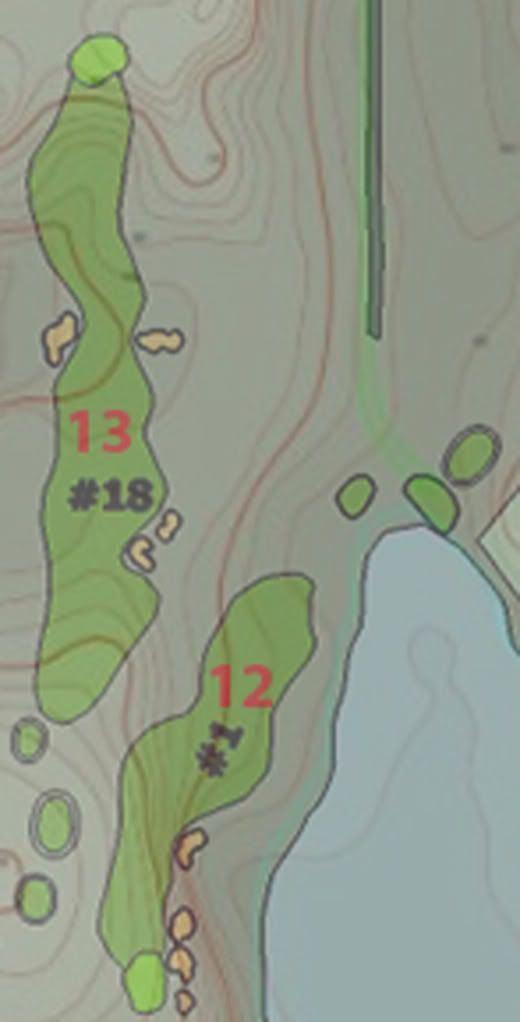
Hole 12 occupies the corridor of the controversial 1st hole. However, instead of a par 5 this par 4 locates the green on top of the ridge which is the landing area for the second shot of the exisiting course. As this is one of the areas where significant earth was moved to create a landing area atop the ridge the photo may be misleading. The tee here would have been farther back and to the left and I think the fairway would have played up on the side slope right of the exisitng fairway.

Hole 13, a par 5, turns back to the north. Starting near the teeing area for the Dell Hole it crosses what is now the 18th fairway proceeding directly through to uneven ground of the Bye Hole in route to a green that would be located in the fairway of the 10th hole. I seem to recall Eric Terhorst pointing out a hole this direction as holding promise, but I think he had the tee starting closer to the current 1st green.
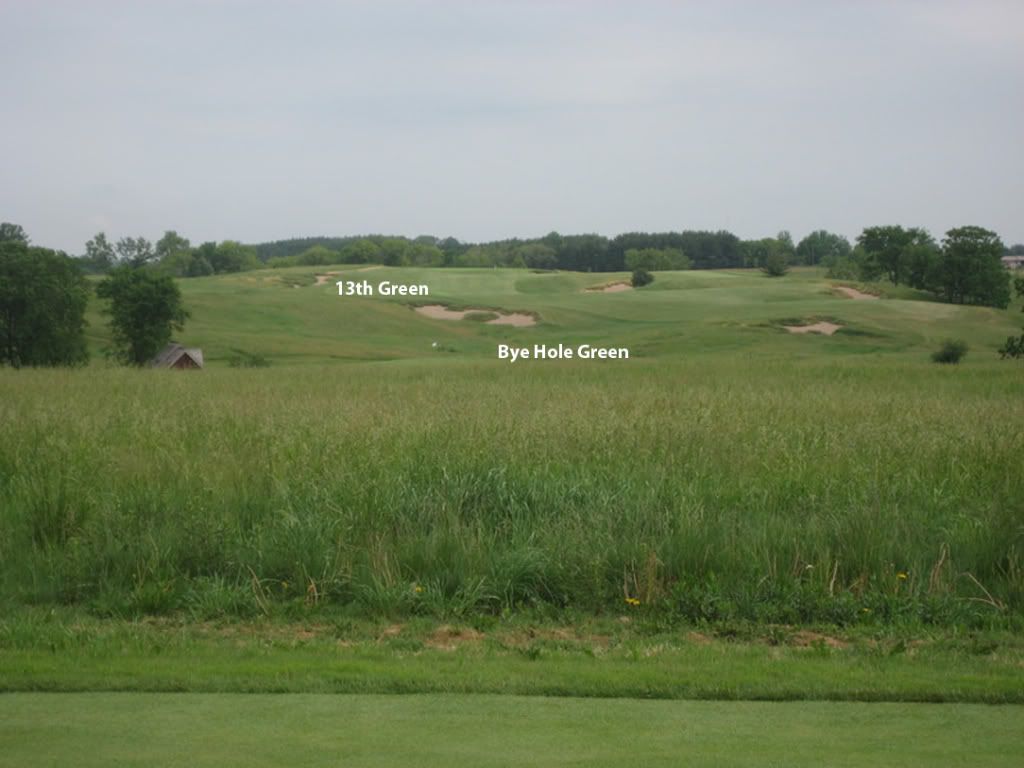
Contour and Routing Map of Hole 14

This dramatically uphill par 3 has a tee near the ninth tee and proceeds to a green located on the rise of current 12th fairway. The angle of approach in the photo is wrong as the tee would be farther left but In think it gives the general idea. This portion of the course is one of the most dramatic Hurdzan Fry and Whitten fashioned a very neat par 4, the 12th from it while Tom chose to use it for two par 3's the 3rd and 14th. Tom can confirm but it looks to me like the green would have been in the little hollow where the three hawthorne trees are located.
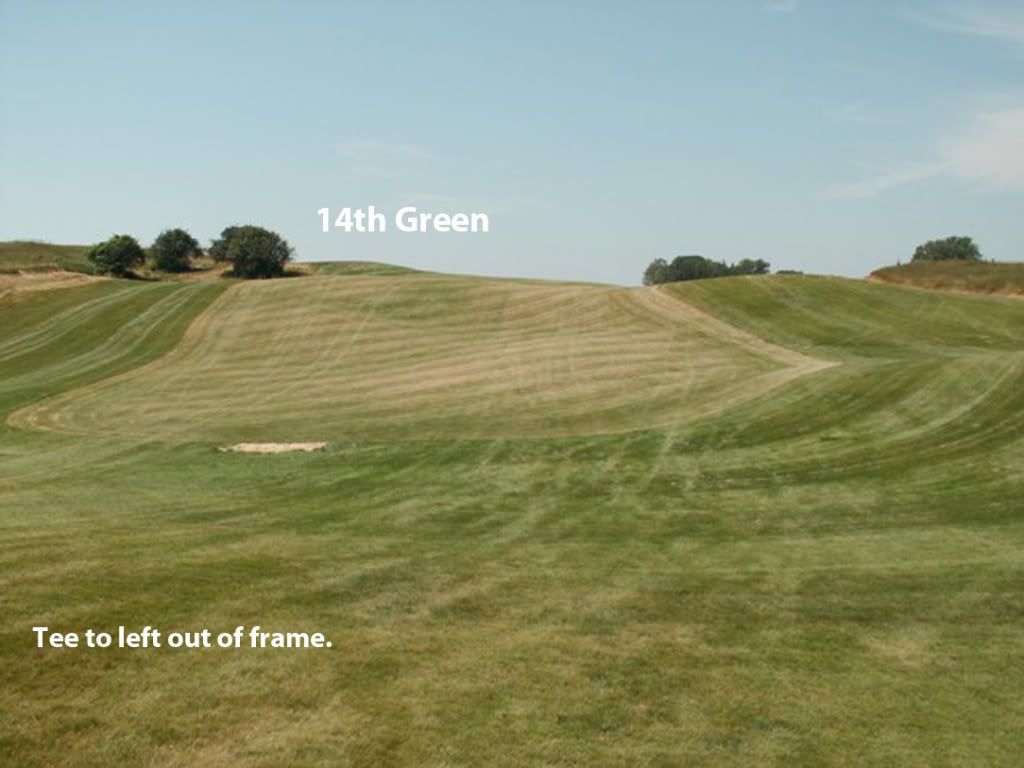
Contour and Routing Map of Holes 15-18
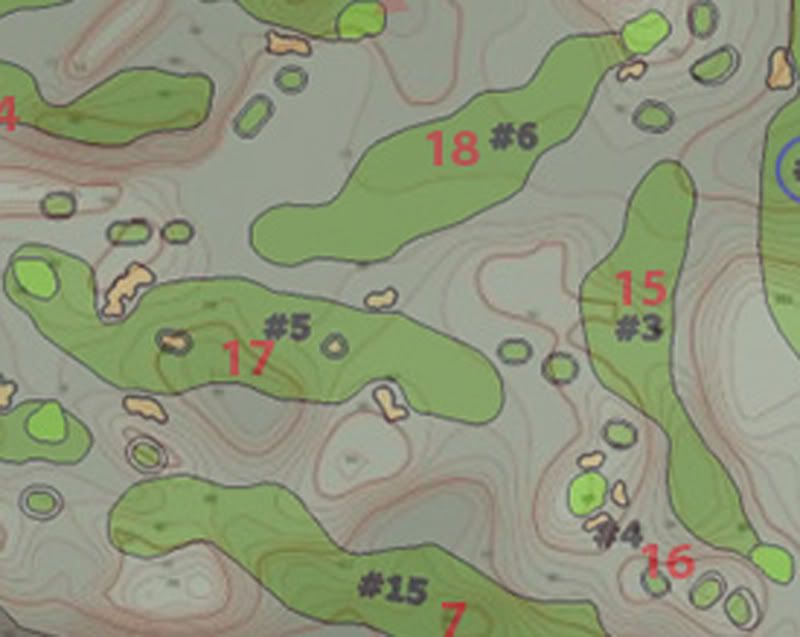
Hole 15 is a slight dogleg left par 4 starting from an elevated tee located on the rise in the fairway of the current 9th fairway and is routed across the 18th and 8th fairways and through the narrow valley used as the greensite of the Dell Hole. The green would have been ltucked back on the narrow ledge at the foot of the hill on which the current 6th green is located. The use of the Dell Hole valley creates a very cool looking hole.
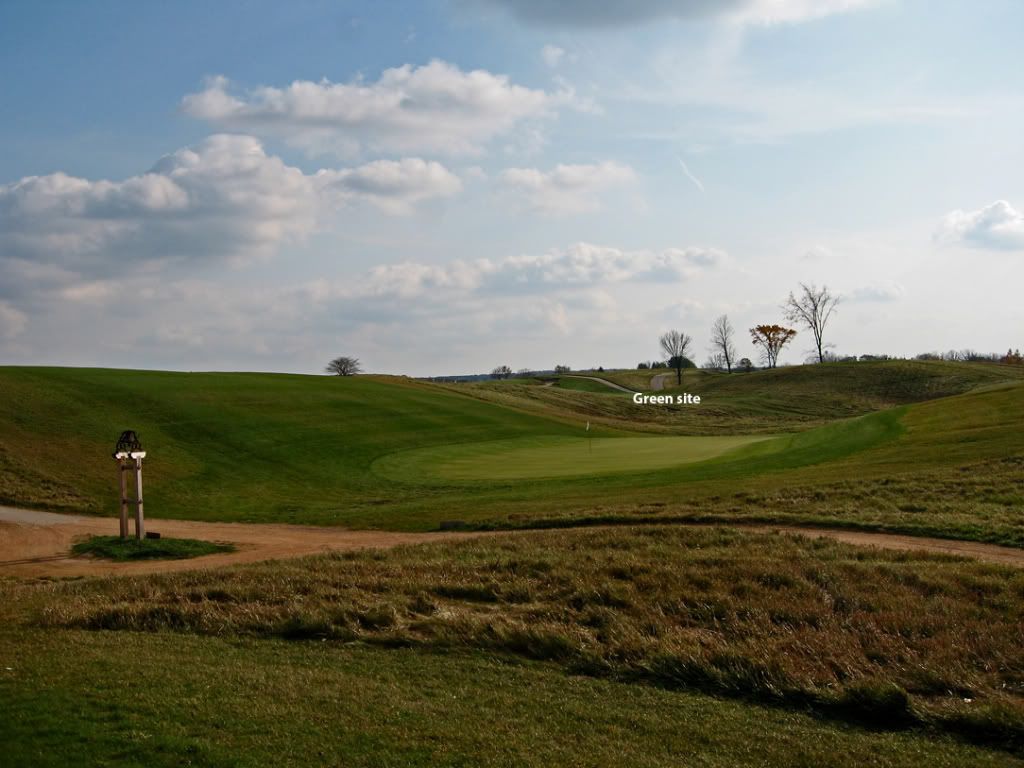
Hole 16 is a shorter par 3 from a hill top tee to a green located on another hilltop across the valley. This moves in the opposite direction of Erin Hills 6th hole, a hole I really like from the 235 yard tee. Tom's would have been much shorter. I'm really not sure about the location of the green in the photo maybe between the palyers and the path, but it should be good enough to show the basic idea.
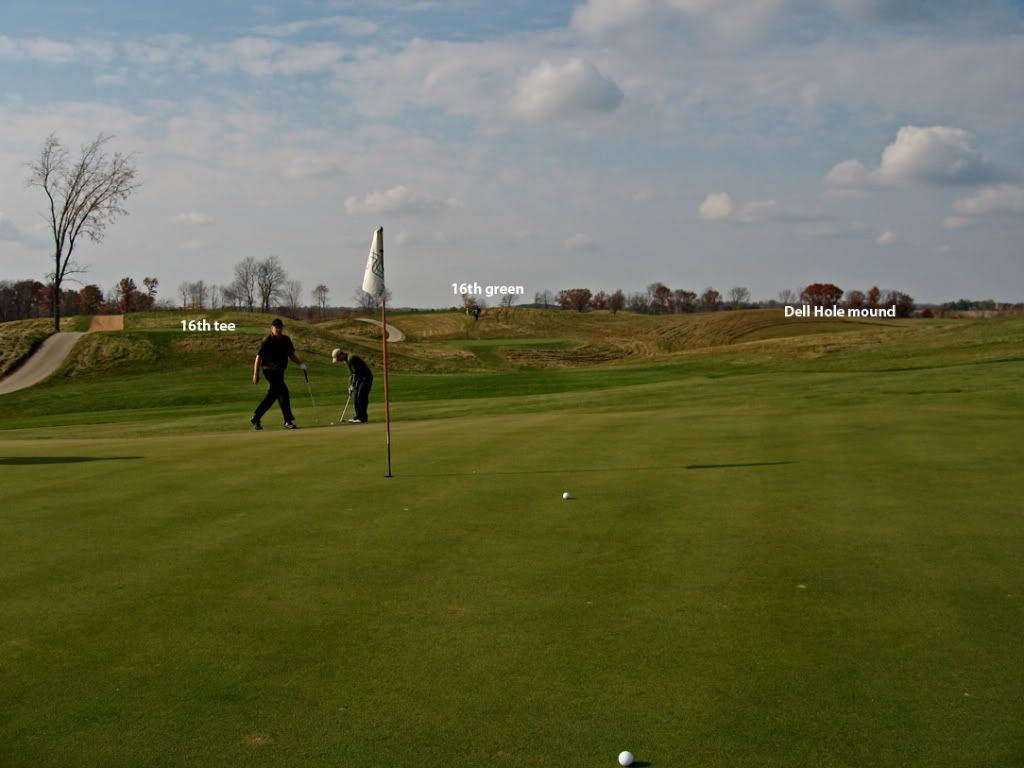
Hole 17 would have been a par 5 moving from the high ground behind the 5th green to a greensite located on the hillside to the left of the 8th green. The hole uses some interesting ups and downs particularly as you get closer to the green. I'm not sure the angles of these photos do the hole justice, but a close look at the topo map should help.
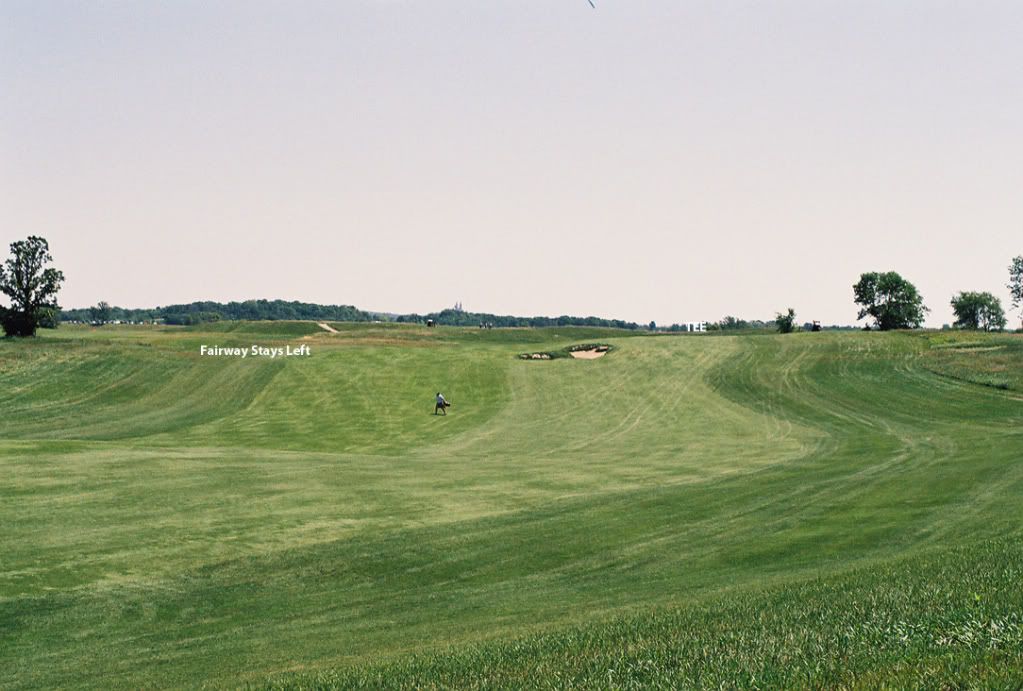
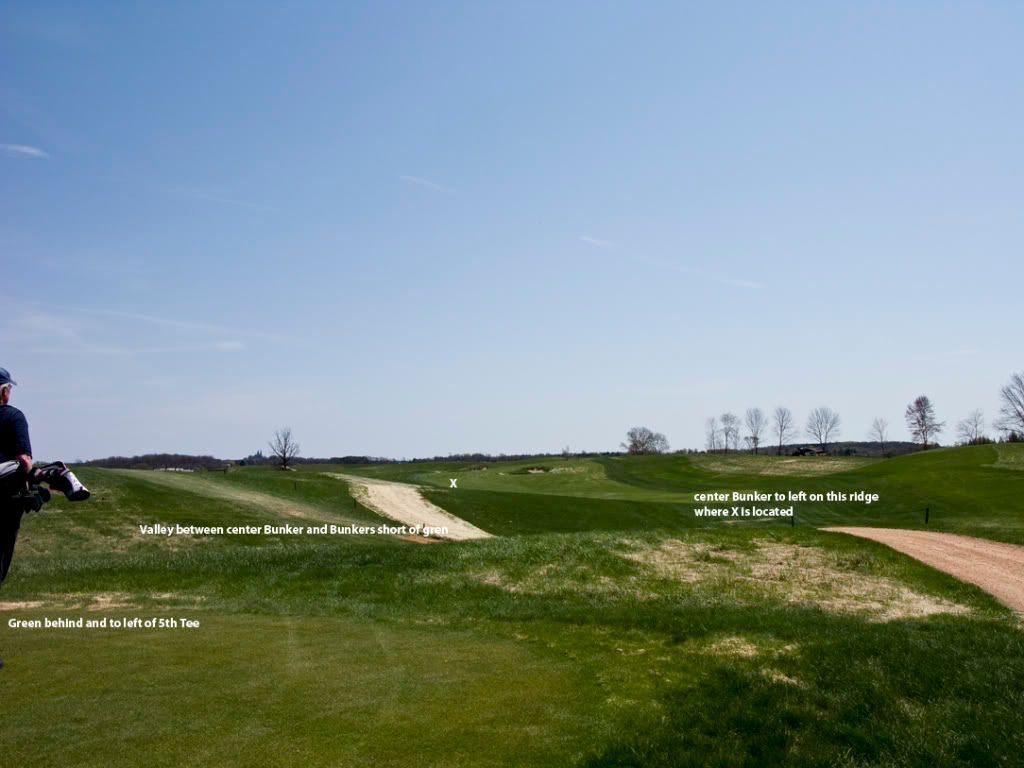
Note the cart is next to the tee shown in the photo above.
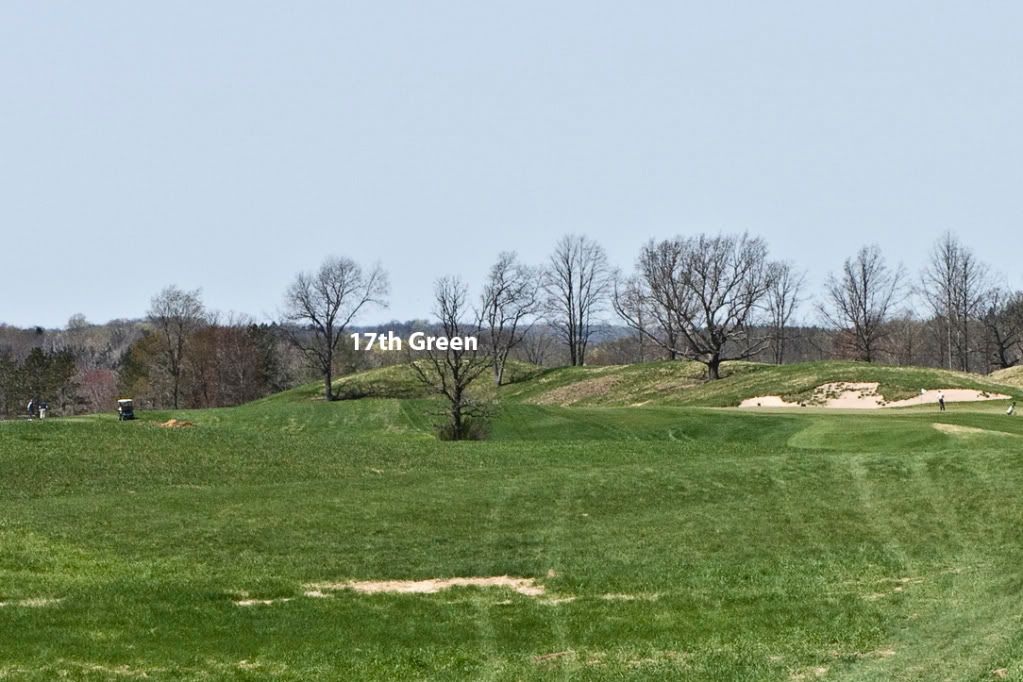
Hole 18 is longer par 4 from a tee near the 8th green seen the last photo cutting on an angle across the 18th fairway to a green located on the rise of the 9th fairway. The angle of the approach is on a diagonal to the slope the green is on and I suspect this green located on the hillside may have had some serious movement to it. The 15th tee would have been located near the large tree probably a little left and frather backtree
